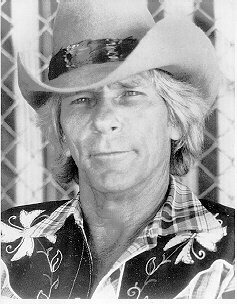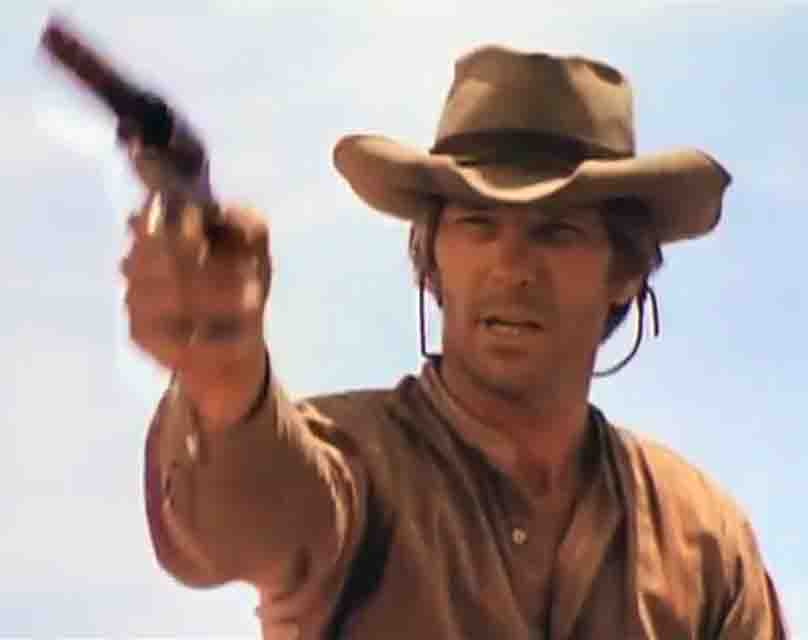Table of Contents
Introduction
L.Q. Jones, born Justus Ellis McQueen Jr. on August 19, 1927, in Beaumont, Texas, was a celebrated American actor, writer, and director. Over a career that spanned more than six decades, Jones earned a reputation as a talented character actor, primarily known for his roles in Western films and television series. With appearances in numerous classics, including several films by Sam Peckinpah, and memorable television roles on shows like The Virginian and Gunsmoke, Jones built a solid career that reflected both longevity and versatility. At the time of his passing on July 9, 2022, Jones’ net worth was estimated to be around $2 million. His financial success is a testament to his enduring career, which included not only acting but also directing and producing ventures.
Career Highlights and Financial Success
Jones’ acting career began with his film debut in Battle Cry (1955), where he was credited under his birth name. He later adopted “L.Q. Jones” as his professional name, which he first used as the name of his character in the same movie. His partnership with director Sam Peckinpah became a defining part of his career, with notable appearances in films such as Ride the High Country (1962), The Wild Bunch (1969), and Pat Garrett and Billy the Kid (1973). These films, particularly The Wild Bunch, were critical and financial successes, and Jones’ participation in them cemented his status as a reliable and respected actor in Hollywood. In addition to his film career, Jones became a regular in popular Western television series like Cheyenne, Rawhide, and Gunsmoke, which further boosted his earnings through episode fees and residual payments.
Writing, Directing, and Other Ventures
Beyond acting, Jones explored writing and directing. One of his most significant achievements was directing the 1975 science fiction film A Boy and His Dog, based on a novella by Harlan Ellison. The film became a cult classic and remains a notable entry in the sci-fi genre. Jones’ dual role as writer and director allowed him to diversify his sources of income beyond acting. Additionally, he co-produced The Brotherhood of Satan (1971), further demonstrating his ability to work behind the scenes and earn from multiple facets of the entertainment industry. These ventures not only contributed to his artistic reputation but also supplemented his financial success over the years.
Sources of Income and Net Worth
Jones’ estimated net worth of $2 million reflects the cumulative earnings from his long-standing career. Acting contracts, royalties, and syndication rights from his many television roles likely contributed significantly to his wealth. Western TV series like The Virginian enjoyed re-runs and syndication for years, ensuring steady residual income. Similarly, his involvement in popular films like Casino (1995) and The Mask of Zorro (1998) added to his financial portfolio. Although Jones did not reach the level of financial fame as some leading Hollywood stars, his consistent work over decades provided him with a comfortable and secure lifestyle.
Legacy
Jones lived a rich, diverse life, exploring multiple professions before settling into acting. His close friendship with fellow actor Strother Martin and his collaborations with influential directors highlight the depth of his involvement in the film industry. His final years included work on A Prairie Home Companion (2006), further demonstrating his passion for acting even in his later life. With a net worth of $2 million, L.Q. Jones leaves behind a legacy of hard work, artistic exploration, and a love for cinema that continues to resonate with fans of classic Westerns and beyond.
Early Life and Background

L.Q. Jones, originally born as Justus Ellis McQueen Jr. on August 19, 1927, in Beaumont, Texas, came from a modest background shaped by personal challenges and diverse life experiences. His early years were marked by tragedy when his mother, Jessie Paralee (née Stephens), died in a car accident. Raised by his father, Justus Ellis McQueen Sr., a railroad worker, Jones grew up in the town of Port Neches, Texas, where he attended Port Neches–Groves High School, graduating in 1945.
Following high school, Jones enlisted in the U.S. Navy, serving from 1945 to 1946, just after the end of World War II. This brief period in the military instilled discipline, but after completing his service, Jones sought to explore multiple career paths. He first attended Lamar Junior College (now Lamar University) and later Lon Morris College in Jacksonville, Texas. Jones showed interest in a variety of academic fields and eventually studied law, business, and journalism at the University of Texas at Austin from 1950 to 1951. However, he did not settle into a career immediately and instead experimented with different professions.
During this time, Jones engaged in a variety of pursuits, including working as a stand-up comic and playing professional baseball and American football. He even attempted ranching in Nicaragua, showcasing a sense of adventure and adaptability that would later characterize his acting career. These varied experiences enriched his personality, eventually feeding into the characters he portrayed on screen. Despite trying his hand at multiple professions, Jones hadn’t yet found his true calling. His transition into acting began somewhat serendipitously after he reconnected with an old college roommate, Fess Parker, who had gained fame as an actor. Parker’s success inspired Jones to pursue acting seriously.
When Jones made his film debut in 1955 with the movie Battle Cry, he was credited under his birth name. However, the character he portrayed in the film was named L.Q. Jones, a name he found appealing. From then on, he adopted the name as his permanent stage name, marking the official start of his career in entertainment. This decision proved to be pivotal, as the name “L.Q. Jones” became synonymous with memorable roles in Western films and television series.
Jones’ early years illustrate a man with restless ambition, someone willing to explore various avenues before discovering his passion. His personal experiences—ranging from military service to comedy, sports, and international travel—would later inform his nuanced performances. The name change from Justus McQueen to L.Q. Jones symbolized a fresh chapter, allowing him to leave behind the uncertainty of earlier years and embrace the persona that would make him a recognizable face in Hollywood Westerns. The diversity of his background set him apart from many of his contemporaries, preparing him for a successful career in front of the camera. His story also highlights how life’s twists and turns can lead to unexpected opportunities, with Jones finding his niche only after years of exploration.
Career Highlights and Earnings

L.Q. Jones built an impressive career as an actor, director, and producer, earning both artistic acclaim and financial stability. His journey began in the 1950s with roles in films like Battle Cry (1955), but it was in the 1960s and 1970s that he became synonymous with Western cinema and TV. Jones became a core member of Sam Peckinpah’s stock company, participating in several of the director’s influential films. His roles in Ride the High Country (1962), The Wild Bunch (1969), Major Dundee (1965), and Pat Garrett & Billy the Kid (1973) demonstrated his talent for playing rugged, complex characters. These performances established him as a sought-after actor in Hollywood, particularly for Western-themed roles. His close friendship with fellow character actor Strother Martin also led to several collaborations, further cementing Jones’ legacy in Western film history.
In addition to his film work, Jones made regular appearances in popular TV series during the height of the Western genre’s popularity. His notable roles included Andy Belden in The Virginian, where he appeared between 1963 and 1971. He also guest-starred in hit shows like Gunsmoke, Cheyenne, Rawhide, Laramie, and The A-Team. These TV appearances not only boosted his public profile but also earned him residual payments as many of these series enjoyed long runs and syndication. His regular presence in these shows ensured a steady income and allowed him to explore other creative pursuits.
Jones diversified his career by venturing into writing and directing, with his most notable achievement being the 1975 film A Boy and His Dog. The movie, based on a novella by Harlan Ellison, became a cult classic in the science fiction genre. As the director and writer, Jones enjoyed not only the artistic satisfaction of creating a unique film but also the financial rewards from its lasting popularity. A Boy and His Dog remains an influential work, frequently discussed in film studies and cult cinema circles, which contributes to Jones’ continued relevance in the entertainment industry.
In addition to directing, Jones co-produced the horror film The Brotherhood of Satan (1971). His involvement in production allowed him to earn from behind-the-scenes roles, adding another revenue stream to his career. These ventures demonstrate his ability to leverage his industry experience and connections to pursue diverse projects.
In the later stages of his career, Jones took on memorable roles in major films such as Martin Scorsese’s Casino (1995) and The Mask of Zorro (1998). These films reached global audiences, and his involvement in them further ensured residual income from home video releases and streaming services. His final notable performance was in A Prairie Home Companion (2006), showing that even in his later years, he remained passionate about acting.
Through a combination of acting, writing, directing, and producing, Jones amassed a net worth of approximately $2 million by the end of his career. His earnings reflect the cumulative impact of film and TV roles, along with smart diversification into directing and production. Although he never achieved the financial heights of Hollywood’s biggest stars, Jones’ long and steady career ensured a comfortable lifestyle, sustained by royalties and residual payments from his many projects. His financial success is a testament to his versatility, hard work, and passion for storytelling.
Sources of Income

L.Q. Jones’ financial success throughout his career was built on multiple streams of income, including acting salaries, directing and writing projects, and royalties from long-running television shows and cult films. As a versatile actor with over 160 film and television credits, Jones accumulated substantial earnings from consistent work in the entertainment industry. His journey from a budding actor in the 1950s to a well-known face in Western films and TV series allowed him to maintain steady income over several decades.
Acting Salaries
Jones’ primary source of income came from his acting roles, particularly in films and television. His debut in Battle Cry (1955) marked the start of a long and successful career, during which he appeared in popular films such as The Wild Bunch (1969) and Casino (1995). His frequent collaborations with director Sam Peckinpah in films like Ride the High Country (1962), Major Dundee (1965), and Pat Garrett & Billy the Kid (1973) further elevated his stature in Hollywood. These films were critically and commercially successful, which translated into substantial paychecks for Jones as an actor.
In addition to his film work, Jones earned significant income from television appearances. He became a staple of Western TV shows, with regular roles in series such as The Virginian (1963–1971), Gunsmoke, Cheyenne, and Rawhide. These roles allowed him to earn consistent salaries as a television actor, where he appeared in episodic and recurring roles over several seasons. His work in Western television made him a recognizable face to audiences and earned him steady payments, as these shows often enjoyed long runs and syndication deals.
Directing and Writing Projects
Jones also diversified his income by venturing into directing and writing. One of his most notable projects was the 1975 science fiction film A Boy and His Dog, which he directed and wrote based on a novella by Harlan Ellison. The film gained cult status over the years and became a classic in the genre, earning Jones both critical acclaim and financial rewards. As the director and writer, Jones benefited from box office earnings as well as home video sales and streaming revenues as the film continued to attract a following. His work on this project not only showcased his talents behind the camera but also provided an additional source of income beyond acting.
In addition to A Boy and His Dog, Jones was involved in production work for other films, such as The Brotherhood of Satan (1971), which he co-produced. His ability to step into different roles within the industry—be it acting, writing, or producing—allowed him to generate multiple income streams over the years.
Royalties and Syndication
One of the key contributors to Jones’ long-term financial success was the royalties and residual payments he earned from television shows and films that continued to air long after their initial release. Western television shows like The Virginian and Gunsmoke enjoyed extended runs in syndication, allowing Jones to benefit from residual payments each time an episode aired. His appearances in films such as Casino (1995) and The Mask of Zorro (1998) also contributed to his royalty earnings, as these films were distributed widely on home video, DVD, and streaming platforms.
The cumulative effect of these royalty payments ensured that Jones’ income continued to flow long after the initial release of his projects. Residuals, particularly from popular television shows and cult films, are a reliable source of income for actors, and for someone like Jones—who appeared in many enduring series—this became a significant part of his earnings.
L.Q. Jones’ Notable Investments and Assets
Throughout his long career, L.Q. Jones not only earned from acting and directing but likely invested wisely to secure financial stability. Although detailed information on his investment portfolio is not publicly available, his net worth of $2 million at the time of his passing in 2022 suggests that he carefully managed his assets. Like many actors of his generation, Jones may have acquired real estate, business ventures, and even memorabilia from his acting career, which could have contributed to his long-term wealth. This section explores the types of potential investments and assets Jones may have accumulated.
Real Estate Investments
For many actors, real estate offers a stable and reliable investment. Jones spent much of his later life in California, where property values have historically appreciated. Given his decades of work in Hollywood, it is likely that Jones owned residential properties that not only served as his home but also provided a financial cushion. Many actors diversify their investments by acquiring rental properties or vacation homes, generating additional income through property appreciation and rental revenue. If Jones followed a similar path, his real estate holdings would have contributed significantly to his net worth.
Business Ventures and Production Involvement
Jones was not just an actor—he also ventured into film production. His involvement as a co-producer on The Brotherhood of Satan (1971) shows that he was keen to diversify his income beyond acting. Production roles often come with profit-sharing agreements, allowing individuals to earn from a project’s success over time. In addition, Jones’ directorial work on the cult classic A Boy and His Dog (1975) may have provided him with ongoing revenue from home video sales and streaming. His experience in producing and directing indicates that he likely reinvested earnings from these projects into further creative ventures or other income-generating opportunities.
Memorabilia and Collectibles
Given the iconic status of some of the films and television shows Jones participated in, it is possible that he accumulated memorabilia or props from his acting career. Items such as scripts, costumes, posters, or signed collectibles can become highly valuable over time, especially if they are connected to cult classics like The Wild Bunch (1969) or Casino (1995). These collectibles not only hold sentimental value but could also appreciate in worth, making them a potential asset in Jones’ estate.
Legacy and Final Years of L.Q. Jones
L.Q. Jones left an indelible mark on Hollywood through his work in Western films and television. His unique screen presence, characterized by rugged charm and memorable performances, contributed significantly to the Western genre. While his earlier years were defined by collaborations with Sam Peckinpah and recurring appearances on iconic TV series, Jones continued to remain active in film well into the 21st century. His final years reflect the enduring appeal of his talent, as he appeared in critically acclaimed films like A Prairie Home Companion (2006). Jones’ legacy extends beyond his roles, influencing future generations of filmmakers and solidifying his status as a cult favorite in Hollywood.
Later Film Appearances
Even as he aged, L.Q. Jones showed no signs of slowing down creatively. He continued to secure roles in prominent films, including Casino (1995), The Edge (1997), The Mask of Zorro (1998), and finally A Prairie Home Companion (2006). Directed by Robert Altman, A Prairie Home Companion was a fitting conclusion to Jones’ cinematic career, as the film celebrated storytelling, nostalgia, and the interplay of art and life—elements that had defined much of Jones’ journey in the industry. His final roles were not limited to Westerns, reflecting his ability to adapt to diverse genres and remain relevant in an evolving film landscape.
Contributions to the Western Genre
Jones’ name became synonymous with American Westerns, both on television and in film. From his early work in Cheyenne and Gunsmoke to his unforgettable performance in The Wild Bunch (1969), Jones personified the spirit of the Old West. His portrayal of rugged, morally complex characters earned him a devoted following, while his collaboration with Sam Peckinpah on multiple projects cemented his reputation as a versatile supporting actor. Jones’ contributions shaped the modern perception of Westerns, adding layers of emotional depth and authenticity to a genre that often focused on archetypes.
Beyond the Western genre, Jones influenced filmmakers through his directorial work on A Boy and His Dog (1975). The film’s dark humor, innovative storytelling, and exploration of dystopian themes continue to resonate with science fiction enthusiasts. Directors and writers often cite Jones’ film as a pioneering work that expanded the possibilities of independent filmmaking. His impact is seen not only in Westerns but also in the realms of cult cinema and independent film.
Lasting Influence and Legacy
L.Q. Jones’ career exemplifies longevity and artistic versatility. His success across different genres and mediums ensured that his work remained relevant long after his heyday in the 1960s and 70s. Jones’ performances continue to inspire contemporary actors and filmmakers who admire his ability to balance toughness with vulnerability. Additionally, his work behind the camera, particularly in independent films, highlights his dedication to artistic exploration.
At the time of his passing on July 9, 2022, Jones left behind a body of work that spanned over five decades. His legacy lives on through his memorable characters, the films he directed, and the impact he made in Hollywood’s Western genre. With a net worth of $2 million and a reputation as a cult favorite, Jones remains a beloved figure in the industry. His ability to adapt, inspire, and evolve ensures that his influence will continue to be felt for years to come.
Conclusion: The Lasting Legacy of L.Q. Jones
L.Q. Jones, born Justus Ellis McQueen Jr. on August 19, 1927, in Beaumont, Texas, is remembered not just for his extensive filmography but also for his profound impact on the entertainment industry. With a net worth estimated at $2 million, Jones’ financial success is a testament to his long and varied career that spanned more than six decades. From his early beginnings in the 1950s to his roles in contemporary cinema, Jones maintained a presence in Hollywood that few can match. His financial achievements reflect not only his acting prowess but also his ability to adapt to the changing landscape of the film industry. He navigated through a variety of genres, notably Westerns, which became his hallmark. Jones starred in iconic films directed by Sam Peckinpah, including Ride the High Country (1962) and The Wild Bunch (1969), and left an indelible mark on the genre. These performances showcased his unique ability to portray complex characters, blending toughness with vulnerability. In addition to acting, Jones ventured into writing and directing, with A Boy and His Dog (1975) standing out as a significant contribution to science fiction cinema. This film demonstrated his commitment to exploring narratives beyond traditional boundaries, reflecting his creativity and ambition as an artist. Throughout his career, Jones worked alongside notable actors and filmmakers, developing a reputation for collaboration and camaraderie that enhanced his projects. His friendships with fellow actors, particularly Strother Martin, added depth to his performances and enriched the films he participated in. Beyond his collaborations, Jones was a pioneer in his own right, embracing opportunities in television as well. His recurring roles in popular series like The Virginian (1963–1971) helped solidify his status as a household name. His work in television complemented his film career, allowing him to reach a broader audience while establishing a legacy in multiple formats. The respect and admiration Jones garnered within the industry are evident in the lasting influence he had on both actors and filmmakers. Even in his later years, he continued to secure roles in significant films such as Casino (1995) and A Prairie Home Companion (2006), proving his ability to remain relevant and impactful. Jones’ versatility extended to the realm of production, where he took on roles behind the camera, exemplifying a holistic understanding of the filmmaking process. His contributions to both acting and directing enriched the narratives of the films he worked on, showcasing his artistic vision and commitment to storytelling. L.Q. Jones’ life and career serve as a reminder of the dedication and passion required to thrive in the entertainment industry. His net worth of $2 million reflects not just financial success but also a rich tapestry of experiences and relationships built over a lifetime in show business. As we look back on his legacy, it is clear that Jones will be remembered as a multifaceted talent whose influence transcended the roles he portrayed. His work continues to inspire future generations of artists, solidifying his place in Hollywood history. With a career that has left an indelible mark on cinema and television, L.Q. Jones embodies the spirit of a true artist, whose legacy will endure in the hearts and minds of fans and filmmakers alike.
FAQS
1. What was L.Q. Jones’ net worth at the time of his death?
L.Q. Jones had an estimated net worth of $2 million at the time of his death on July 9, 2022.
2. What was L.Q. Jones’ birth name and where was he born?
L.Q. Jones was born Justus Ellis McQueen Jr. on August 19, 1927, in Beaumont, Texas.
3. How did L.Q. Jones transition into acting?
After serving in the U.S. Navy and exploring various career paths, including sports and ranching, Jones transitioned into acting, adopting the stage name “L.Q. Jones” after a character he played in his film debut.
4. Which films and TV shows are L.Q. Jones best known for?
Jones is best known for his roles in Sam Peckinpah films such as Ride the High Country and The Wild Bunch, as well as his appearances in Western TV series like The Virginian and Gunsmoke. He also appeared in films like Casino and The Mask of Zorro.
5. Did L.Q. Jones have any writing or directing credits?
Yes, L.Q. Jones directed the cult classic A Boy and His Dog (1975) and co-produced films like The Brotherhood of Satan.
6. What were some sources of income for L.Q. Jones?
Jones’ income came from acting salaries for over 160 credits, residuals from TV shows, royalties from films, and earnings from his directing and writing projects.
7. What notable investments or assets did L.Q. Jones have?
While specific details about his investments or assets are not widely publicized, he may have owned properties and collectibles related to his acting career.
8. How did L.Q. Jones’ contributions to film and television impact his net worth?
Jones’ extensive career in film and television, coupled with his roles in successful projects and long-running shows, significantly contributed to his financial success and net worth.
9. What was L.Q. Jones’ legacy in Hollywood?
L.Q. Jones is remembered as a versatile actor, writer, and director who made significant contributions to the Western genre and independent filmmaking, influencing future generations of filmmakers and actors.
10. In which films did L.Q. Jones appear in his later years?
In his later years, Jones appeared in films like A Prairie Home Companion (2006), showcasing his ability to remain relevant in the industry until the end of his career.






